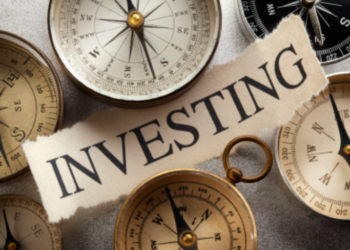You most likely would have heard of the phrase ‘opportunity cost’, probably during your basic economics class back in secondary school. Simply defined, it means the relative cost of doing one thing instead of something else. You can also think of it as a forgone alternative.
Every decision you make to either purchase or sell something has an opportunity cost. As humans, we knowingly or intuitively make most of our spending decisions based on it. This is because knowing the opportunity cost of our expenditures helps us to prioritise our needs/wants.
In the investing world, the same rule applies. However, most of us do not take a critical look at the opportunity cost of some of the investments we make. Instead, we make impulsive decisions, throwing money at any investment opportunity that promises to deliver some supposedly ‘high returns’.
[Read Also: This is how to measure the performance of your Investments]
Understanding opportunity cost in investing
In investment, opportunity cost has to do with the cost of choosing one investment over another one, which has the potential to earn a higher return. A simple formula used for calculating the opportunity cost of your investment, as developed by Investopedia, can be seen below:
Opportunity cost = Return on best forgone alternative – Return of chosen option.
For example, you have two investment opportunities:
- Option A: Invest in the stock of ABC Company which promises a return of 15%.
- Option B: Invest in a business that will generate 12%.
The opportunity cost of choosing the business over buying company ABC’s share is 3% (15%-12%).
A much more complicated reality
In reality, calculating your opportunity cost is much more complex than the example above. This is because there are hundreds or thousands of investment choices you are faced with. And they all have varying risks.
However, the logical thing for you to do will be to first create a list of possible investment opportunities, after which you scrutinize and analyze them, and then finally pick what fits your long term goals.
A comment I saw on Jonathan Clement’s blog really explains the concept of opportunity cost:
“Even if we ask about the tradeoff involved – or what economists call the opportunity cost – there’s no guarantee we’ll make the right choice. Often, acting on our first impulse is simply too alluring, but at least asking the question forces us to consider the issue, however briefly, and maybe we’ll have the presence of mind to weigh the alternatives and perhaps even summon the willpower to choose a different path.”
Personally, I use the 5yr FGN Bond yield as a minimum opportunity cost before I invest in any business. This is because FGN Bonds are risk-free, even as the Federal Government of Nigeria will never default on their debt obligation. Hence, the safety of my principal is guaranteed.
[Read Also: 5 post retirement ideas you should share with your parents]
On a final note, thinking in terms of opportunity cost before you invest will help you create a stronger capital allocation discipline. In other words, you will better able to deploy your money to its best use. This will, in turn, help you earn above average returns. It will also help you to prioritise better, not just for investing purposes, but also in terms of spending money and incurring expenses.
























So how does the topic/subject matter relate to the picture used please?
Hello. Please, look at the picture again. You will understand.
A choice between buying a car or buy or build a house
In opportunity cost, two options at least are available. The diagram just hypothetically made use of just two baskets of choices amid varied alternatives. Yours or that of anyone at all may be different from those depicted. So look again and get the concept. Ok.
Great economic advise. Universal
Good advice. However, you have to account for the present value and time value of money. Follow the principle of a dollar today is worth more than a dollar tomorrow.